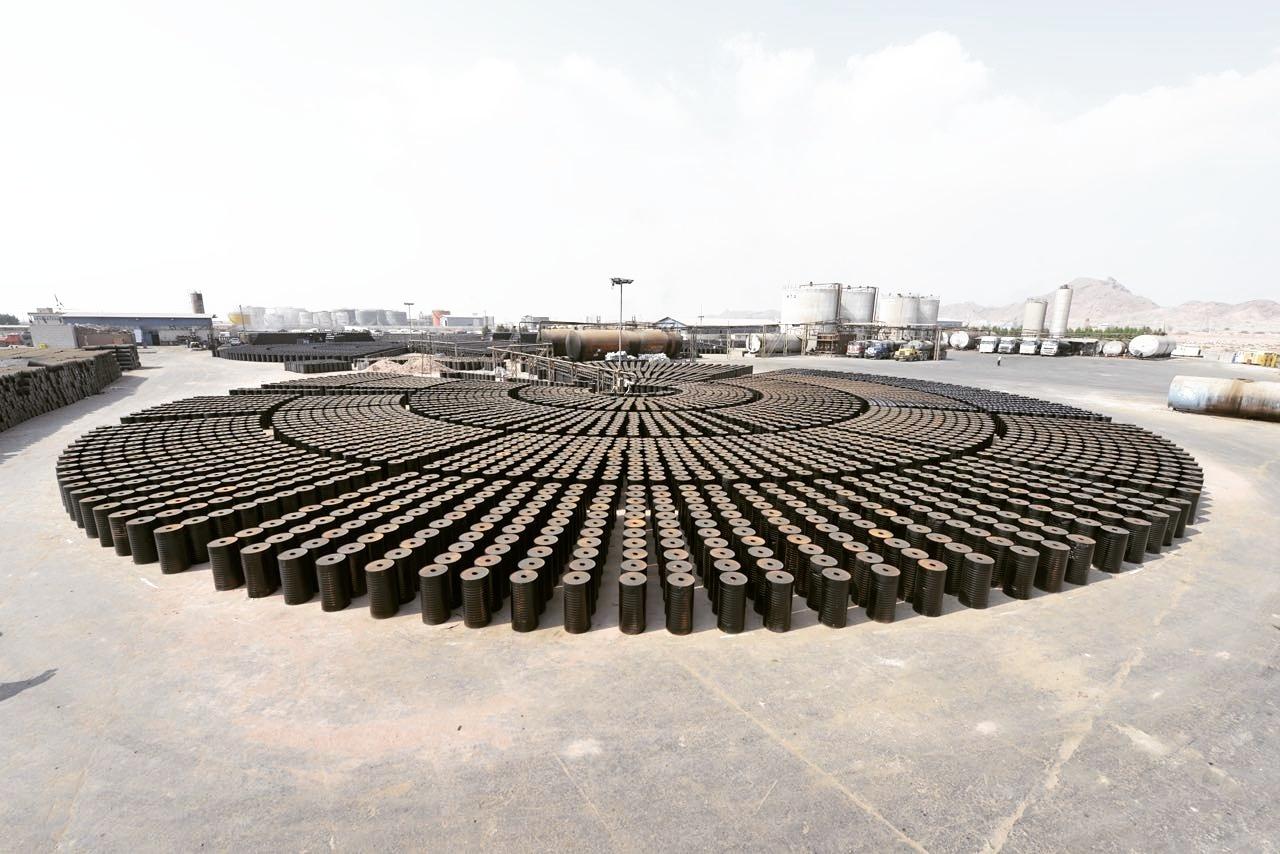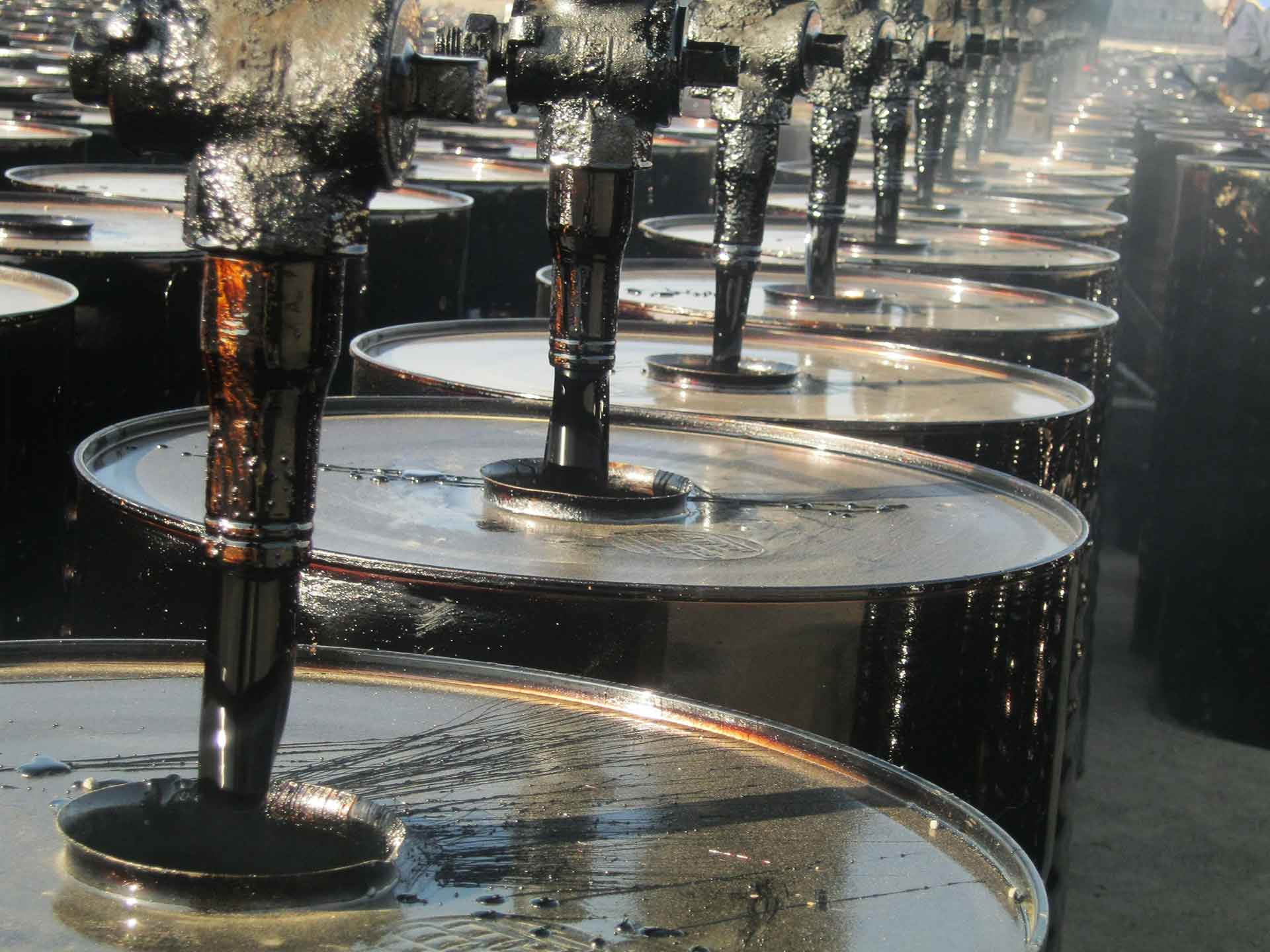| BITUMEN PG 58/16 PERFORMANCE GRADE | |||
| SPECIFICATION | UNIT | VALUE | METHOD |
| Maximum Pavement Design Temp. | Degree Celsius (°C) | 46 | ASTM D6373 |
| Maximum Pavement Design Temp. | Degree Celsius (°C) | – 34 | ASTM D6373 |
| Flash Point (Cleveland Open Cup) | Degree Celsius (°C) | 230 min | ASTM D92 |
| Rotational Viscosity, 135°C | Pascal Second (Pa.s) | 3 max | ASTM D4402 |
| Dynamic Shear, 70°C | Degree Celsius (°C) | 46 min | ASTM D6373 |
| Mass Loss | Weight Percentage (WT %) | 1 max | ASTM D6 |
| Creep Stiffness | Degree Celsius (°C) | -24 | ASTM D6648 |
| Direct Tension | Degree Celsius (°C) | -24 | ASTM D6723 |
| Absolute Viscosity, 60°C | Poise (P) | 295 | ASTM D4402 |
| Penetration, 25°C | 1/10 Millimetres (mm) | 300 | ASTM D5 |
| Specific Gravity | Kilogram per Cubic Meter (kg/m³) | 1.026 min | ASTM D70 |
| APPLICATION TEMPERATURE | |||
| APPLICATION | UNIT | RECOMMENDED TEMPERATURE | |
| Storage Temperature | Degree Celsius (°C) | 50-163 | |
| Spraying Temperature | Degree Celsius (°C) | 177 max | |
| BITUMEN PG 46/22 PERFORMANCE GRADE | |||
| SPECIFICATION | UNIT | VALUE | METHOD |
| Maximum Pavement Design Temp. | Degree Celsius (°C) | 46 | ASTM D6373 |
| Maximum Pavement Design Temp. | Degree Celsius (°C) | – 34 | ASTM D6373 |
| Flash Point (Cleveland Open Cup) | Degree Celsius (°C) | 230 min | ASTM D92 |
| Rotational Viscosity, 135°C | Pascal Second (Pa.s) | 3 max | ASTM D4402 |
| Dynamic Shear, 70°C | Degree Celsius (°C) | 46 min | ASTM D6373 |
| Mass Loss | Weight Percentage (WT %) | 1 max | ASTM D6 |
| Creep Stiffness | Degree Celsius (°C) | -24 | ASTM D6648 |
| Direct Tension | Degree Celsius (°C) | -24 | ASTM D6723 |
| Absolute Viscosity, 60°C | Poise (P) | 295 | ASTM D4402 |
| Penetration, 25°C | 1/10 Millimetres (mm) | 300 | ASTM D5 |
| Specific Gravity | Kilogram per Cubic Meter (kg/m³) | 1.026 min | ASTM D70 |
| APPLICATION TEMPERATURE | |||
| APPLICATION | UNIT | RECOMMENDED TEMPERATURE | |
| Storage Temperature | Degree Celsius (°C) | 50-163 | |
| Spraying Temperature | Degree Celsius (°C) | 177 max | |
Bitumen Class 600
Class 600 bitumen is primarily used to manufacture extra heavy-duty asphalt pavements that need to endure substantial traffic loadings.
Heavy duty asphalt pavements need to be designed to accommodate significant traffic loadings for up to 40 years without exhibiting structural failure and hence, need to be constructed using appropriate materials.
The load spreading characteristics of pavement layers are governed by their stiffness and C600 bitumen facilitates the production of high modulus asphalt.
Class 600 bitumen is primarily used to manufacture extra heavy-duty asphalt pavements that need to endure substantial traffic loadings.
Applications bitumen C600
bitumen C600 is the hardest paving grade bitumen available in Australia and is mainly used to produce high modulus asphalt.Heavy duty asphalt pavements need to be designed to accommodate significant traffic loadings for up to 40 years without exhibiting structural failure and hence, need to be constructed using appropriate materials.
The load spreading characteristics of pavement layers are governed by their stiffness and C600 bitumen facilitates the production of high modulus asphalt.
| Asphalt recommendations | ||||
| Mixing Temperature | Holding time at Mixing Temperature | Medium term storage temperature | Medium term storage time | Maximum safe handling temperature |
| 175 – 185°C | 14 days | 130-150°C | 30 days | 190°C |
| Typical characteristics | |||
| Description | Units | Methods | Typical |
| Viscosity at 60° | Pa.s | AS 2341.2 | 600 |
| Viscosity at 135° | Pa.s | AS 2341.2 | 0.7 |
| Pen at 25° | dmm | AS 2341.12 | min 20 |
| Flashpoint | °C | AS 2341.14 | max 250 |
| Viscosity of residue at 60° C (% of original) | Pa.s | AS 2341.2 | max 300 |











